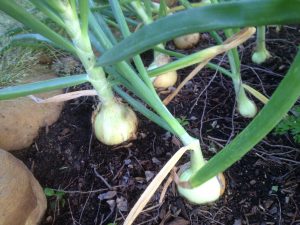Gardening season is just around the corner, and there are a few essentials you need to know for a successful harvest. Start by determining the square footage of your garden and understanding the nutritional composition of the soil. If you’re unsure about the soil quality, I recommend doing a soil test. It’s a good practice to conduct a soil test every 18 months to 2 years, especially when growing different crops with varying nutritional needs. Luckily, Wells Brothers has got you covered with their soil test kits and soil testing services. Once you have the test results, selecting the right amendments becomes a breeze.
Another crucial aspect is implementing a solid crop rotation plan. Farmers have been practicing this ancient technique for centuries, yet there are still some folks who insist on planting the same crop in the same spot year after year, only to be disappointed with the results.
Exciting news! We now have a fresh stock of onion sets (45-50 onions per set). These beauties thrive in full sun and well-drained soil that’s about eight inches deep, so make sure to find a sunny spot and loosen up that soil. Plant the onions deep enough to provide support and space them around four to six inches apart. Once the root system is established (typically within 10-14 days), gently expose the bulbs to sunlight by removing some of the surrounding soil. Remember to keep them well-hydrated during the initial growth phase, as moist soil is crucial. Once the bulbs start forming, the moisture requirement becomes less critical.
Onions have higher fertilizer needs compared to most other garden crops. They particularly benefit from moderate nitrogen levels (1st number) and higher phosphate content (2nd number). Fertilizers like Ferti-lome Tomato/Vegetable (7-22-8), Hi-Yield garden fertilizer (8-10-8), Carl Pool’s 13-13-13, and Espoma’s 10-10-10 work well for onions. Apply the fertilizer when preparing the bed, and you can also consider using Wells Brothers’ “Jump Starter” or bone meal during planting. Around three weeks later, top dress with fertilizer, and repeat when the bulb growth becomes noticeable. Additionally, I suggest fertilizing every three weeks until the end of April. With proper care, you should be harvesting your delicious onions towards the end of May.
In case you’re interested, we also have Red LaSoda potatoes available for your gardening pleasure. Happy planting!






